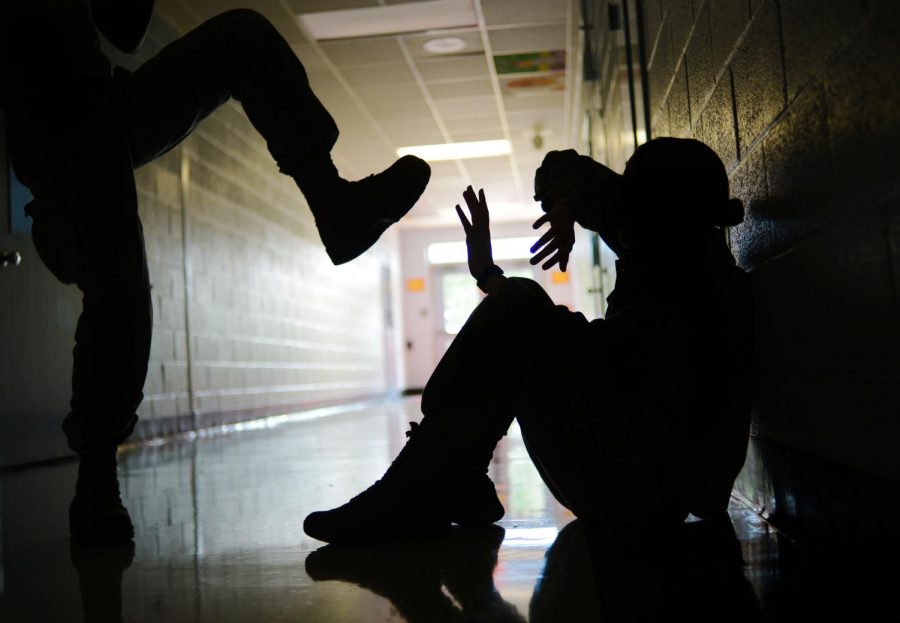Bullying Is Everywhere
The importance of awareness
Senior Airman Tabatha Zarrella, public domain photo via Wikimedia Commons
Bullying can be seen anywhere, including in government buildings like the military and public school.. This photo appeared with the caption “October 2013 marks the eighth annual national Bullying Prevention Month in the United States. It is important for Shaw Air Force Base, S.C., Airmen to recognize and prevent bullying to maintain the quality of the world’s greatest Air Force.”
Have you seen signs up around Abington High School? How many times have you walked past those signs and ignored them? If you did read the signs, you would know that most people have either been bullied or have been a bully at some point. And if they have not been either, there is a significant chance that they have been affected by bullying.
Bullying can happen anywhere at any time. Even on the internet. A lot of bullied people choose to kill themselves. According to the Center for Disease Control (CDC) 2017 report, a staggering “16% of high school students say they have seriously considered suicide.” Although it is difficult to determine what the reasons are, the CDC claims that “suicide is now the third leading cause of death in youths from age 10 to 24.” Perhaps bullying and cyber-bullying can be attributed to this rise in suicide.
The U.S. Department of Health and Human Services, on their website stopbullying.gov, points to bullied individuals as having a higher chance of depression and other mental disorders, with a small portion of them becoming violent. Some mental disorders cause a person to be changed permanently. This can be attributed to bullying as destroying a person’s sense of self-worth.
Sometimes bullying will cause someone to take their life or the lives of others. Some of these people were Dylan Klebold and Eric Harris, the shooters in the infamous Columbine High School shooting. On April 20, 1999, the pair entered the school and killed 13 people and wounded 23 others before killing themselves.
At the time, Columbine was one of the most terrifying school shootings in the nation. Klebold was only 17, and Harris was only 18. Klebold’s mother was quoted in 2016 saying, “If I had recognized Dylan was experiencing mental distress, he would not have been there, he would’ve gotten help,” adding fuel to the fire of speculation that Klebold was bullied. The prevailing theory of the shooter’s motives were that Klebold was bullied to the point of breaking, and when he broke, he decided to take everyone he knew with him. He convinced Harris to join him, then used his help to commit mass murder.
More recently, sparking the “Never Again” moment, was the Parkland, Florida shooting on Feb 14. The shooter Nikolas Cruz killed 17 and injured 17 more. Cruz had been described by his peers as an outcast, and as reported in the NY Times, Isabelle Robinson, a senior at Marjory Stoneman Douglas, said Cruz “had a known history of rage and brutality” leading to his isolation from social groups. His isolation may have allowed him to easily dehumanize people he had known for years.
These two shootings, Columbine and Parkland, are considered some of the deadliest school shootings in history.
So what can be done? Instead of giving teachers guns, put the money towards hiring aides and providing more therapies. Arm the population with the knowledge that there are ways to relieve stress, anger, and depression other than bullying others or harming themselves. We need to make students more aware that there are people out there willing to help them.


